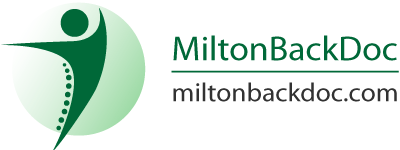
Concussions are a serious concern in sports and physical activities, and their management requires a careful and informed approach. After an injury, the process of assessing a concussion and developing a tailored return-to-sport or activity plan is critical for ensuring a safe recovery and minimizing the risk of further complications. Here’s a comprehensive guide to understanding post-injury concussion assessment and creating a personalized return-to-sport plan.
Post-Injury Concussion Assessment: What to Expect
- Immediate Evaluation
Initial Assessment: As soon as a concussion is suspected, a thorough initial evaluation is essential. This typically includes a review of the athlete’s symptoms, an assessment of their cognitive and physical status, and to rule out any immediate red flags which would result in immediate signs of more severe brain injury.
Standardized Testing: Many healthcare professionals use standardized concussion assessment tools such as the SCAT (Sport Concussion Assessment Tool) or ImPACT (Immediate Post-Concussion Assessment and Cognitive Testing). These tools help measure symptoms, cognitive function, balance, and coordination. - Detailed Examination
Cognitive Testing: Post-injury, cognitive assessments are crucial in evaluating memory, attention, and processing speed. These tests help identify any deficits that may indicate a concussion’s impact on brain function.
Physical and Neurological Evaluation: This includes testing for balance, coordination, and motor function. A neurological exam may also be conducted to assess any changes in vision, hearing, or other sensory functions.
Symptom Tracking: Regular symptom tracking is vital for monitoring the progression or improvement of the concussion. Tools like symptom checklists and daily logs help both the individual and healthcare providers keep track of changes over time. - Further Testing
Follow-Up Assessments: Follow-up evaluations are often scheduled to monitor recovery. These may involve repeated cognitive and physical assessments to track progress and adjust the management plan as needed.
Tailoring a Return-to-Sport Plan
- Physical and Cognitive Load Management
Initial Load Management: After a concussion, managing physical and cognitive loads is crucial. This involves balancing periods of rest with light, controlled activities to avoid exacerbating symptoms. The goal is to gradually reintroduce activities without overwhelming the brain or body.Gradual Reintroduction: Begin with light aerobic exercise such as walking or stationary biking, and monitor symptoms closely. Cognitive load should also be managed, with limited engagement in tasks that require significant concentration, like studying or working. - Gradual Return-to-Sport ProtocolStep 1: Light Aerobic Exercise: Once symptom-free at rest, the individual can begin light aerobic exercise, such as walking or stationary biking. This stage is about reintroducing physical activity without exacerbating symptoms.
Step 2: Sport-Specific Exercise: If no symptoms arise from light aerobic exercise, the next step is to incorporate sport-specific drills that do not involve contact. This helps to reintroduce the demands of the sport while continuing to monitor for any symptoms.
Step 3: Non-Contact Training: At this stage, the athlete can engage in non-contact training drills, including practicing skills and strategies related to their sport. This step ensures that they can handle the physical and cognitive load of their sport without any issues.
Step 4: Full Contact Practice: If the athlete remains symptom-free, they can progress to full-contact practices. This stage involves engaging in practice sessions that simulate game conditions, allowing the athlete to test their readiness for competition.
Step 5: Return to Competition: The final step is a gradual return to competition. This should be done with caution and under close supervision. The athlete should only return to full competition if they have successfully completed all previous stages without any recurrence of symptoms. - Ongoing Monitoring
Regular Check-Ins: Throughout the return-to-sport process, regular check-ins with healthcare providers are essential. They will monitor the athlete’s progress and make adjustments to the plan as necessary.Recognizing Symptoms: Both the athlete and their support network should remain vigilant for any signs of concussion symptoms. If symptoms reappear at any stage, the athlete should return to the previous step and allow more time for recovery. - Education and PreventionUnderstanding Risks: Educating athletes, coaches, and parents about concussion risks and management is crucial. Knowledge about how to recognize symptoms and the importance of following the return-to-sport protocol can prevent premature returns and reduce the risk of further injury.Preventative Measures: Implementing preventative strategies, such as proper use of protective equipment and adhering to safe play practices, can help minimize the risk of future concussions.


